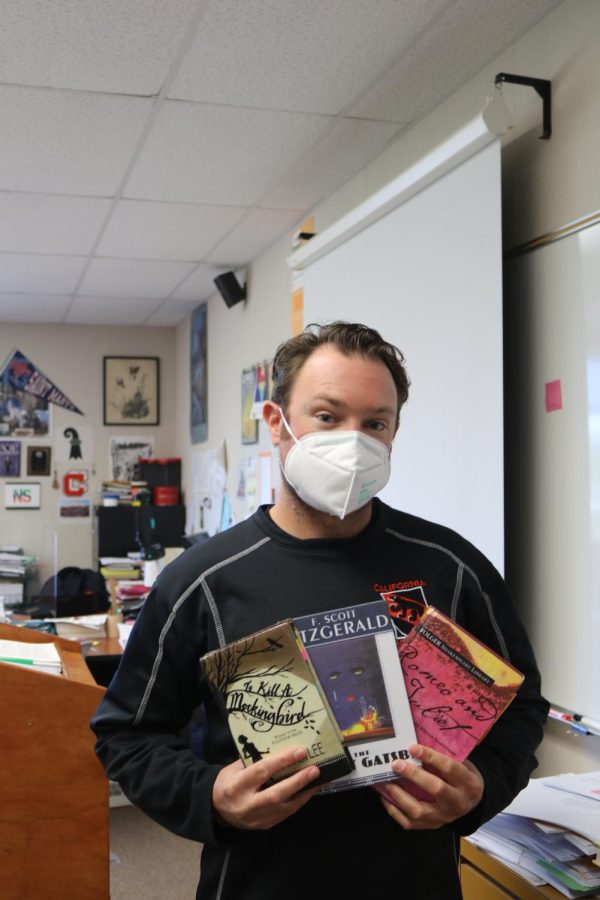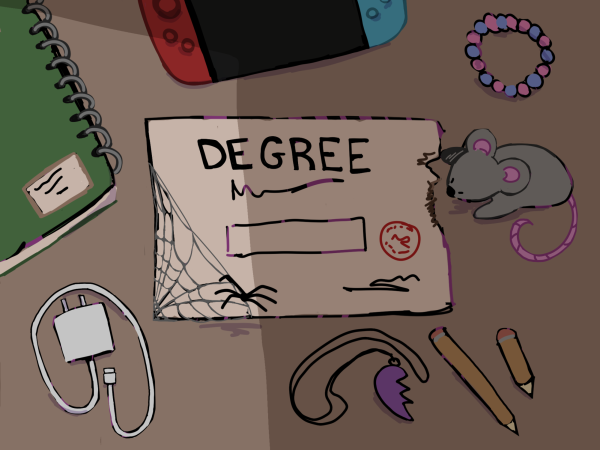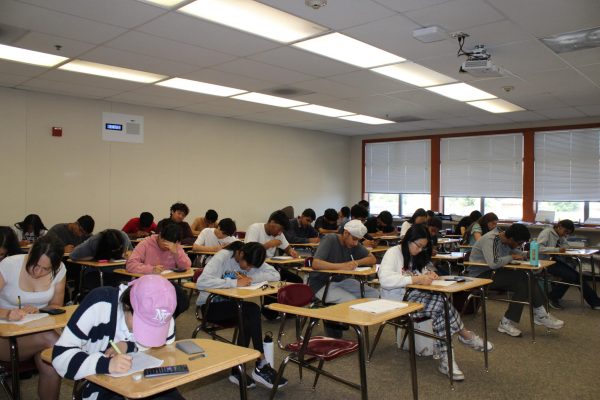English novels are outdated
English teacher Nick Shea holds several books that his freshmen and junior classes read.
Every year, students in English classes find themselves pouring through the pages of a book that feels completely irrelevant to their lives, giving them less motivation to interact with the reading.
While many of the current books that are generally taught in English classes don’t include student input and are very counterproductive educationally, this can be solved by having the district and teachers emphasize student choice in English novel selections.
Novels for English classes have to meet some criteria to be taught in class: they must be approved by the district’s board of education (as recommended by the California Department of Education), have enough copies in the textbook room, and should fit with an overall theme that each grade level tries to focus on.
As the district has slowly shifted their reading policies from a select set of books that should be taught for each grade to more progressive models that give greater priority to student choice, teachers have started teaching literature in very different ways, with some choosing to follow the recommended novel curriculum and some not.
Now that teachers are gaining more choice in what their students read, and there is no specific list of books required to be taught, teachers have the opportunity to choose books based on student interest.
At Cal, there are some English teachers who are following this trend by coming up with new ways to interest students in reading, such as literature circles. Literature circles are a book-club-type model where students are able to make a selection out of a set of books, giving them more choice in what they read and allowing for a higher degree of involvement in their own learning.
If we want more freedom in choosing what we read as students, a great course of action would be to have the school and district continue making a push toward student choice-oriented reading models, by allowing students to choose what books they read, as long as they meet class requirements.
Requiring teachers to make at least one of the books students read throughout the year something they can select has the potential to increase overall interest in reading beyond teacher required books.
Our current reading curriculum in English classes features a lot of classics and older literature, including the titles “Of Mice and Men”, “Romeo and Juliet”, “The Great Gatsby”, “A Midsummer’s Night’s Dream”, “The Crucible”, and “Animal Farm”, just to name a few.
While there is a lot to learn from older literature, it is not always the best at interesting students because the language is generally more difficult to read. Older books should certainly be taught in class, but not without having their significance explained, as well as diversifying the curriculum through offering students the opportunity to read influential modern literature as well.
Being able to have some degree of choice in what we read as students gives us more motivation to read with genuine interest.
We want to have an active role in our education and learn about the opportunities of the world rather than just follow a set of requirements.

Kira Sidhu is a sophomore at Cal High. This is her first year reporting for The Californian Newspaper. In her free time she enjoys writing, photography,...

Freshman Dannika Shah is a first year photographer for The Californian. She is a swimmer on a swim team and coaches in her free time. In the future she...


